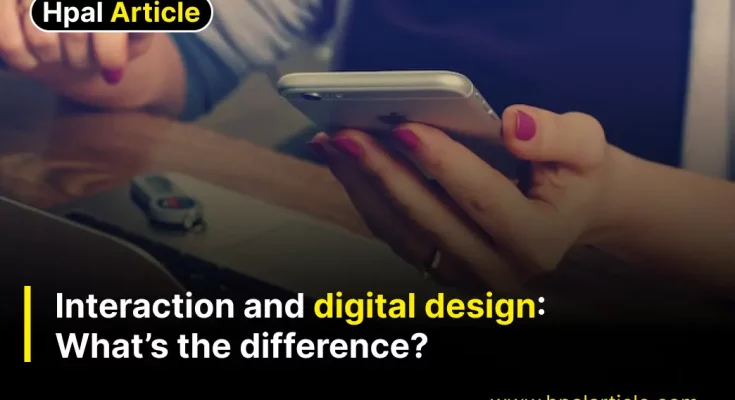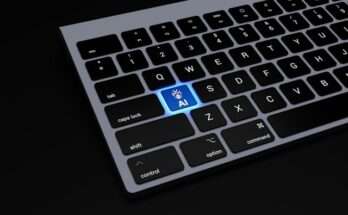Both Interaction and Digital Design are important considerations in the development of digital products and services. Together, they help ensure that users have a positive and efficient experience when using these products and services.
Digital design refers to the design of products or services that are delivered through digital means, such as websites, mobile apps, or software. It involves the use of visual design elements such as layout, color, and typography to create an aesthetically pleasing and effective user experience.
Interaction design, on the other hand, focuses on how people interact with digital products and services. It involves designing user flows, navigation, and interfaces in a way that is intuitive and easy for users to understand and use. This can include designing touchscreens, gestures, and other forms of input and interaction.
Have you ever wondered what the difference is between digital and interaction design? While many people use the two terms interchangeably, there are some distinct differences between them. In this blog post, we will explore what these differences are and how they can be applied to the design process. We’ll also discuss the importance of understanding the differences between digital and interaction design in order to create effective designs. So, if you’ve ever been curious about the differences between digital and interaction design, then read on!
Interaction and Digital Design: What’s the difference?
- The basics of digital design
- The basics of interaction design
- The differences between digital and interaction design
- Conclusion
The basics of Digital Design
Digital design is a form of visual communication used to convey messages, information, and ideas. It encompasses a range of disciplines such as graphic design, web design, motion graphics, animation, and product design. Digital designers create visual solutions for digital products or services by using software such as Adobe Photoshop, Illustrator, and Sketch.
The digital design incorporates principles from traditional design disciplines such as typography, color theory, and composition. However, it also utilizes the latest technologies and techniques such as responsive design, animation, and user experience (UX) design.

The digital design seeks to create visually appealing designs that are aesthetically pleasing, easy to use, and effective in conveying a message. This can be achieved through the use of visuals such as icons, photos, and illustrations, as well as through typography and layout. Digital designers must also consider the way a product will interact with its environment and how users will interact with the product. They must take into account the target audience’s needs and preferences in order to create an effective design.
The basics of interaction design
Interaction design is a field of design that focuses on creating meaningful experiences between humans and machines, products, services, and systems. Interaction designers create user interfaces, product designs, and interactions that are tailored to a specific user’s needs. This involves understanding the user’s goals, context, and motivations.
When creating interactions, designers consider how users will interact with the product, as well as how they should be guided through it. Designers must understand the user’s capabilities and preferences and how they will interact with the product. To do this, they must consider how the user will use the product and how they should be guided through it. This involves understanding the user’s goals, context, and motivations.
Designers also need to create interactive elements that are visually appealing, easy to use, and consistent across multiple devices. It is important for designers to understand which interactions are best suited for each platform or device. This means considering the various input types, such as a mouse, keyboard, touch, voice, etc., and ensuring that users can complete their tasks with minimal effort. Additionally, designers need to ensure that the user interface is intuitive and usable by users of all skill levels.
By understanding the needs of the user and creating appropriate interaction elements, interaction design allows users to access information quickly and efficiently. In addition to creating engaging experiences for users, interaction design also helps improve product usability and makes the overall experience more enjoyable for users.
The differences between digital and interaction design
Digital design is concerned with the look and feel of a digital product or service. This includes the visual elements of design such as typography, layout, colors, imagery, and icons, as well as the technical aspects such as coding and programming. Digital designers are often tasked with creating a user interface that is both aesthetically pleasing and easy to use.
Interaction design focuses on the user experience. This involves understanding the needs and expectations of users and developing products and services that meet those needs. It also encompasses aspects such as motion graphics, animation, audio/video production, and game design. The main goal of interaction design is to create an intuitive experience that meets the users’ needs and desires.
The main difference between digital design and interaction design is in the focus. Digital design is focused on the look and feel of the product or service, while interaction design is focused on the user experience. Digital designers are concerned with creating a visually appealing product, while interaction designers are concerned with creating an intuitive experience. While digital designers create a product that looks good, interaction designers create a product that works well.
Conclusion:
Digital design refers to the design of digital products or services, such as websites, mobile apps, or software. It involves creating visual elements such as layout, color, and typography to create an aesthetically pleasing and effective user experience.
Interaction design, on the other hand, focuses on how people interact with digital products and services. It involves designing user flows, navigation, and interfaces in a way that is intuitive and easy for users to understand and use. This can include designing touchscreens, gestures, and other forms of input and interaction.
In short, digital design is focused on the visual aspects of a digital product or service, while interaction design is focused on how people use and interact with that product or service. Both are important considerations in the development of digital products and services and often work together to create an effective and user-friendly experience.




